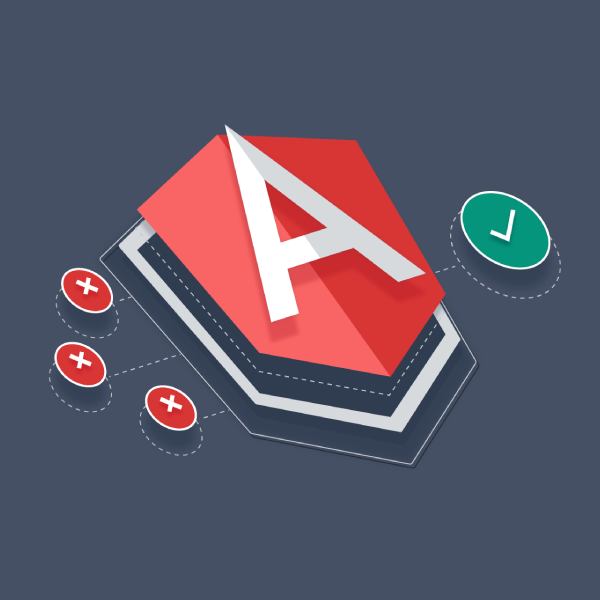AngularJS is an open-source platform focused on developing an application interface, using HTML, CSS and, mainly, JavaScript. Its focus is on open source and front-end web applications, based on TypeScript.
TypeScript is a language that allows developer to write JavaScript code and perform object-oriented programming without losing its advantages. To learn more about the elements, functionalities and development modalities of Angular , Let’s continue the article!
Table of Contents
Main Elements of Angular
When compiling TypeScript code, JavaScript code is generated, and that code is what will be executed in the browser. Among the main basic elements that make this development interesting, we can highlight:
- Templates
- Components
- Routing
- Directives
- Modules
- Services
- Dependency injection
- Infrastructure tools
Another point worth mentioning is the fact that the platform is open source and has a large community, with several organisations using the system and with a lot of consultation material available, for those who want to improve and learn more. The Angular framework , therefore, assist in developing of Single-Page Applications with a level of productivity and quality above average.
How Angular Works?
Angular optimizes the development of front-end web page applications. HTML allows the creation of static pages, however, it is not enough to develop a web application.
Angular adapts and extends traditional HTML for an optimized experience, with dynamic content and direct data linking, known as two-way data-binding , which opens the possibility for automatic synchronization of models and visualizations.
The Angular platform provides resources for the development of Single Page Applications (SPA). That is, a single web page, with the objective of providing the user experience similar to that of a desktop application, where the code is loaded on the single page, dynamically.
Productivity also increases, allowing the developer to break the code into parts, using components, modules and other functionality. This structure makes the development environment more organized, and is called the Angular application diagram . Learn more about these features below:
Components
The concept of components is fundamental when it comes to the front-end framework . Virtually everything is based on components that are responsible for allowing the creation of codes, which can be reused and tested without the risk of collisions.
An Angular application is started by a main component, AppComponent . From it, a hierarchy of other components is connected to the page document object (DOM) model.
Modules
Using Angular, an application is defined by a combination of modules. If we imagine modules as blocks that can be used to build things, in Angular, this action would translate into grouping, exporting and hiding components, directives, pipes and related services.
These modules are used to form an application and are called NgModules . Each application consists of at least one category of this classification, which is the root module of the application.
- Imports : are arrangements with other modules, necessary to use components declared within the application;
- Declarations : receives an arrangement of components, directives and pipes , which are part of the module;
- Exports : Defines the set of components and pipes , available for other modules,
- Providers : Make the declaration of services, where, if a module is root , they will be available for the entire application.
Two-way data binding
This is one of the main features of the framework. The term can be defined as a bidirectional data association, where the information enters through the visualization or template , passing instantly to a component class property. The data in question is already displayed automatically in a DOM ( Document Object Model ) element in the component template.
The main proposal of two-way data binding is to automate the circulation of data, making life easier for the developer by not demanding the creation of handlers to update the visualisation.
That way, when a component’s value changes, the framework itself will perform the update on the page. The bidirectional data link combines input and output in a single process.
Why learn Angular?
One of the biggest attractions of Angular is the practicality in the development and organization of the files within the project. The codes are organized in a manner that is simple to understand and maintain, since the available features allow modularity and break the code into pieces.
It is time saving, since, in Angular, you do not need to use text editors and create extensive configuration codes within the application.
Another interesting point is the update of the page in real time. Making changes to the code and observing the changes almost instantly is a plus. Angular allows this, running all code changes at the same time they are updated on the page.
What is Angular Ivy
If you keep up in the development and innovation market, you may have heard of Angular Ivy . Angular Ivy is a next-generation compilation and rendering pipeline
It is ideal for smaller and faster applications, making a more agile and intelligent development. Angular applications can take a while (few seconds, sometimes) to be compiled but with Ivy it is super fast.
This update works with the idea of localization . That is, Ivy will compile only those components that have edits and are necessary. Following this logic, it is not necessary to perform a new compilation for the whole application . Thus, the day-to-day development is much easier.
Angular Ivy is suitable even for large applications. Earlier, the bigger the application the more time was demanded. With the new update, this process takes the time corresponding to the size of the component being edited.



